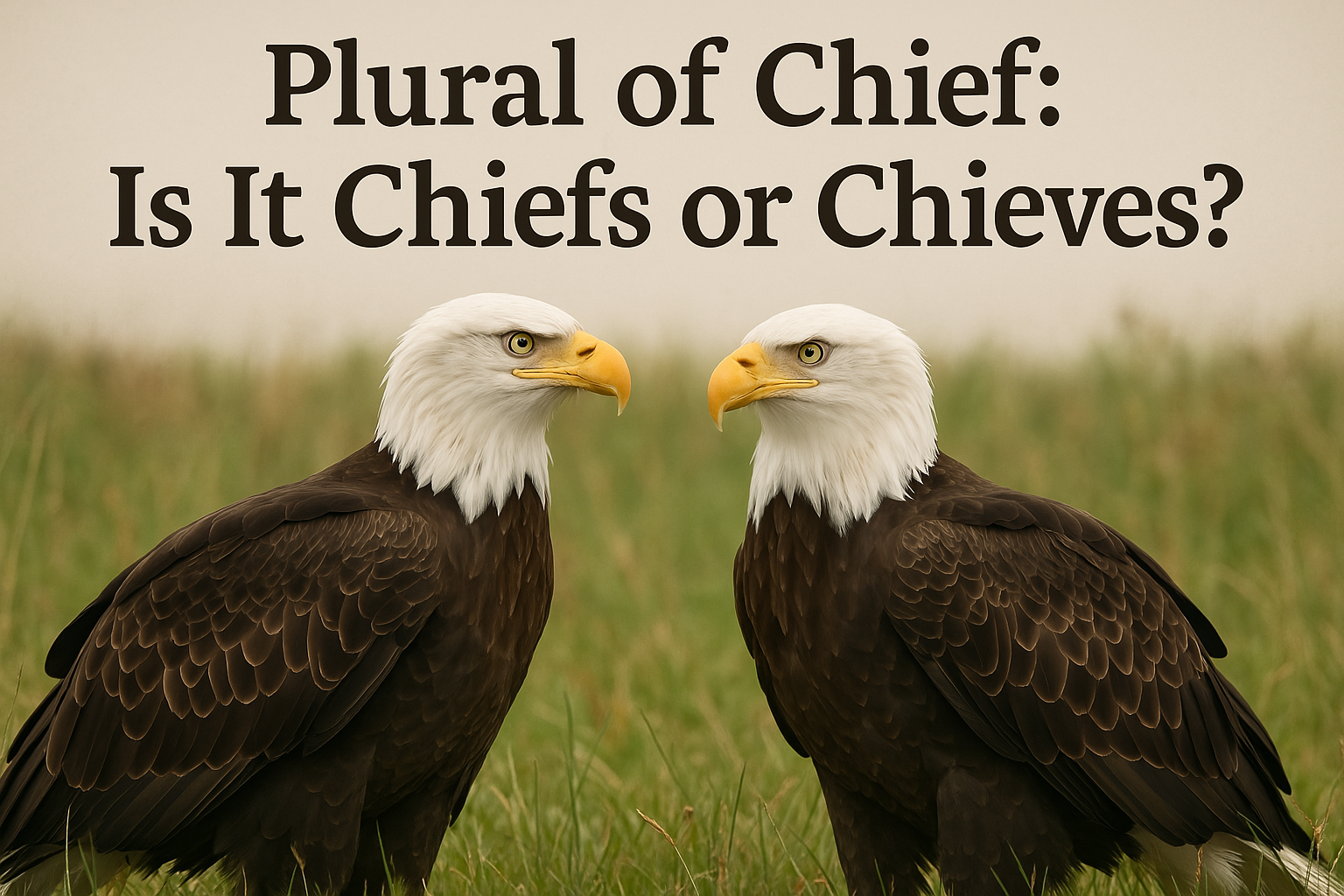English grammar can be tricky, especially when it comes to pluralizing words. One commonly misunderstood word is “chief.” People often wonder, “What is the plural of chief—chiefs or chieves?” If you’ve ever been confused about this, you’re not alone. This article breaks it down in detail, covering chief singular and plural usage, plural examples, origin of chief, synonyms for chief, English rules, and writing tips.
Understanding the Singular and Plural Forms of Chief
The word “chief” refers to a leader or a person in charge. It is commonly used in various contexts such as business, government, and military positions.
Singular Usage
- The chief of police held a press conference.
- The company’s chief executive officer made a major announcement.
- A tribe’s chief plays an important role in leadership.
Read More About This Article: Mastering the Semicolon: Spelling, Usage, and Essential Tips
Plural Usage
- Several chiefs from different tribes attended the meeting.
- The military has different chiefs handling various operations.
- The chiefs of staff discussed national security.
👉 The correct plural of chief is “chiefs,” NOT “chieves.”
Why Isn’t the Plural ‘Chieves’?
Some English words that end in “f” or “fe” change to “ves” in the plural form, such as:
| Singular | Plural |
|---|---|
| Wolf | Wolves |
| Leaf | Leaves |
| Knife | Knives |
| Wife | Wives |
However, “chief” does not follow this rule. Here’s why:
- “Chief” comes from Old French, where its plural was simply “chefs.”
- Words borrowed from French tend to retain their original pluralization style.
- The “ves” rule applies mainly to Germanic words, whereas “chief” is of Latin-French origin.
👉 Since ‘chief’ is a loanword from French, it follows standard English pluralization by adding -s.
The Origin and Etymology of Chief
Understanding the word origin helps clarify why “chiefs” is the correct plural form.
- The word “chief” comes from the Old French “chef,” which means “head” or “leader.”
- It traces back to the Latin word “caput,” meaning “head.”
- Over time, English adapted “chief” from French, keeping its plural form simple (chiefs).
Historical Meaning of Chief
- In medieval times, a “chief” referred to the head of a clan or military unit.
- Later, it became widely used in business and government leadership roles.
- Today, “chief” appears in titles like Chief Executive Officer (CEO), Chief of Staff, and Fire Chief.
👉 Since English borrowed “chief” from French, it does not follow native English pluralization patterns like “knife → knives.”
Usage of Chiefs in Sentences
Singular Examples
- The fire chief arrived at the scene first.
- Our department’s chief scientist is working on a new project.
- The chief reason for his resignation was stress.
Plural Examples
- The tribal chiefs met to discuss land rights.
- Several chiefs of police gathered for the annual conference.
- The chiefs of major tech companies spoke about cybersecurity.
👉 Using the correct plural form—”chiefs”—helps maintain grammatical accuracy in writing.
Synonyms for Chief and Their Plural Forms
If you’re looking for alternative terms, here are chief synonyms and their plural forms:
| Singular | Plural |
|---|---|
| Leader | Leaders |
| Head | Heads |
| Boss | Bosses |
| Director | Directors |
| Commander | Commanders |
| Captain | Captains |
👉 Using synonyms helps diversify language while maintaining proper grammar.
Grammar Rules and Exceptions for Similar Words
English has inconsistent pluralization rules, which is why “chief” causes confusion. Here’s a quick guide to help:
Words That Follow Regular Pluralization (Add -s)
- Roof → Roofs
- Belief → Beliefs
- Proof → Proofs
Words That Change to -ves
- Life → Lives
- Thief → Thieves
- Self → Selves
Why Chief Doesn’t Follow This Rule
- “Chief” is not a Germanic word but a French loanword.
- It follows the standard English rule of adding “-s” for plurals.
- Changing “chief” to “chieves” would be incorrect and inconsistent with its origin.
👉 Learning these rules prevents common grammar mistakes.
Writing Tips: How to Use Chief and Chiefs Correctly
To avoid grammatical errors, follow these writing tips:
Correct Usage
✔ The chiefs of different departments attended the meeting. ✔ The chief of the fire department was honored for bravery. ✔ Several tribal chiefs signed a peace agreement.
Incorrect Usage
❌ The chieves of police were present at the event. (Incorrect spelling) ❌ Many cheefs supported the new policy. (Incorrect form)
Best Practices for Grammar Accuracy
- Always double-check the plural form before writing.
- If unsure, consult a grammar resource or style guide.
- Use example sentences to reinforce proper grammar.
- Avoid incorrect word transformations like “chieves.”
Conclusion
To summarize:
- The correct plural form of chief is chiefs, NOT chieves.
- “Chief” follows standard English rules for pluralization.
- It originates from French (chef) and retains its pluralization style.
- Learning English guidelines on word pluralization helps avoid mistakes.
- Writing tools and language devices can help reinforce proper usage.
By understanding the plural form, grammar rules, and correct application of “chief,” you can improve your writing accuracy and avoid common errors. Keep these writing tips and grammar advice in mind, and you’ll never mistake “chiefs” for “chieves” again!
Did this article help? If you found it useful, share it with others who might need clarity on the plural of chief.
